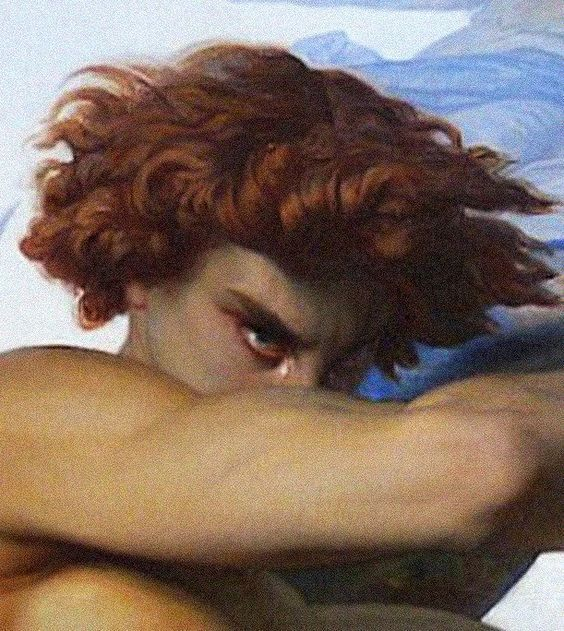
Lucifer in Different Cultures and Mythologies
Hello, dear clients, followers and friends. Veronika here!
As a professional witch, I would like to do an informative blog for all of you, so you can learn about the deepness of the Luciferian path and all that is behind. I hope you guys like it!
For many, the name Lucifer instantly conjures up fiery images shaped by Christian fear-mongering, the “Devil,” the great rebel, the eternal tempter. But if you’re walking the Left-Hand Path, you know better than to accept surface-level stories. The archetype of Lucifer, the Lightbringer, the Morning Star, the Liberator, appears in many cultures and mythologies under different names, faces, and energies. He is more than a devil. He is illumination through rebellion, knowledge through darkness, and the spark of divinity within.
In this post, let’s pull back the veil and explore how the Luciferian current shows up around the world from Mesopotamia to Estonia, and beyond.
More Than a Christian Invention
The name Lucifer originates from the Latin lux ferre: “light-bringer” or “light-carrier.” The original Latin word appears in the Vulgate Bible (Isaiah 14:12), where it referred to a Babylonian king, not the Devil. Over time, translations and Christian dogma distorted this name into an evil figure cast from heaven.
But long before Christianity, the archetype of the rebellious light-bringer existed. And it still does.
Prometheus
Prometheus defied Zeus by stealing fire from the gods and gifting it to humanity, an act of profound rebellion and divine compassion. For this, he was punished, chained to a rock with an eagle devouring his liver daily. Sound familiar?
Luciferian connection: Prometheus embodies forbidden knowledge, defiance of unjust authority, and enduring pain for the liberation of others, all key Luciferian values.
Lesson: Sacred rebellion is a divine act. Fire must be seized.
The Fallen Son of the Dawn (Canaanite/Babylonian)
The Biblical passage in Isaiah likely refers to a Canaanite/Babylonian myth about Helel ben Shachar (literally: "Shining One, Son of the Dawn"). This figure tried to ascend to the heavens and dethrone the highest god but was cast down.
Luciferian connection: This isn't Satan. It’s a myth of cosmic ambition and the cost of challenging divine order.
Lesson: The fall is transformation.
Shiva and the Aghori (Hindu Traditions)
Shiva, the destroyer, the ascetic, the ecstatic dancer, represents chaos, transformation, and the death of illusion. His followers, the Aghori, dwell in cremation grounds, consume taboo substances, and transcend dualities.
Luciferian connection: The Aghori walk through darkness to reach spiritual liberation, an idea mirrored in shadow work and Luciferianism.
Lesson: Truth is often found in the taboo. Liberation requires destruction of illusion.
Enki Sumerian God of Wisdom, Water, and Rebellion
Enki defied the higher gods (like Enlil) to help humanity. He gave humans knowledge, magic, and even intervened in the Flood myth to protect them.
Luciferian connection: Enki is a primordial rebel in service of truth and life, a figure of sacred disobedience.
Lesson: True divinity uplifts, even when it means breaking cosmic rules.
The Feathered Serpent (Mesoamerica)
In Aztec and Toltec mythologies, Quetzalcoatl was a god of wind, learning, and the planet Venus, the morning star. He brought culture, calendars, and wisdom to humans.
Luciferian connection: As the Venusian Light-Bringer, Quetzalcoatl is a clear parallel to the Lucifer archetype. His mythology includes banishment, self-sacrifice, and rebirth.
Lesson: The serpent is a bringer of light and order.
Egyptian Misunderstood
Set, the god of chaos, storms, and the desert, was once revered in ancient Egypt. Over time, he became demonized, especially after conflicts with Horus. Yet Set also protected the sun god Ra on his nightly underworld journey.
Luciferian connection: Set represents the necessary chaos for creation and evolution, a god who walks the margins.
Lesson: Demonization often hides deep power. Embrace your shadows.
Estonian and Finno-Ugric Spirits of Rebellion
Here in Estonia, ancient pagan spirits and forest deities held knowledge that defied both church and king. The metsik, the wild spirit, and nature beings who could not be tamed, reflect Luciferian independence.
Luciferian connection: The Estonian witchcraft spirit walks with untamed gods of forest, storm, and silence. Even when unspoken, Luciferian traits shine in old folk magic.
Lesson: Freedom is not granted, it is lived, even in silence.
Lucifer as an Archetype, Not Just a Name
In truth, Lucifer is less a being and more an archetype, one who:
-Seeks knowledge
-Dares to rebel
-Questions dogma
-Descends into shadow
-Illuminates truth
-Uplifts others through transformation
Whether it’s Prometheus, Enki, Set, or Quetzalcoatl, this figure exists beyond culture, beyond religion. And that’s why the Luciferian path is about embodiment.
Why This Matters for us ''Modern'' Luciferians
Understanding these mythologies deepens your practice. You begin to see Lucifer not as a Christian shadow, but as a global mythic force. It Breaks spiritual isolation, as you realize many before you have walked this path under different names. And last but not least, it strengthens your inner magic: When you work with Lucifer, you tap into thousands of years of rebellious, liberating current... not just one demonized figure.
The Luciferian witch burns. She studies, rebels, and rises. And when she stumbles, she learns. Like Prometheus. Like Enki. Like Lucifer.
So remember: your path is older than Christianity, older than dogma, older than fear.
You carry the fire. You are the Lightbringer.
If you found this post powerful, share it with a fellow seeker. And tell me in the comments which of these mythic figures do you resonate with most?
With love, your witch,
xx Veronika
